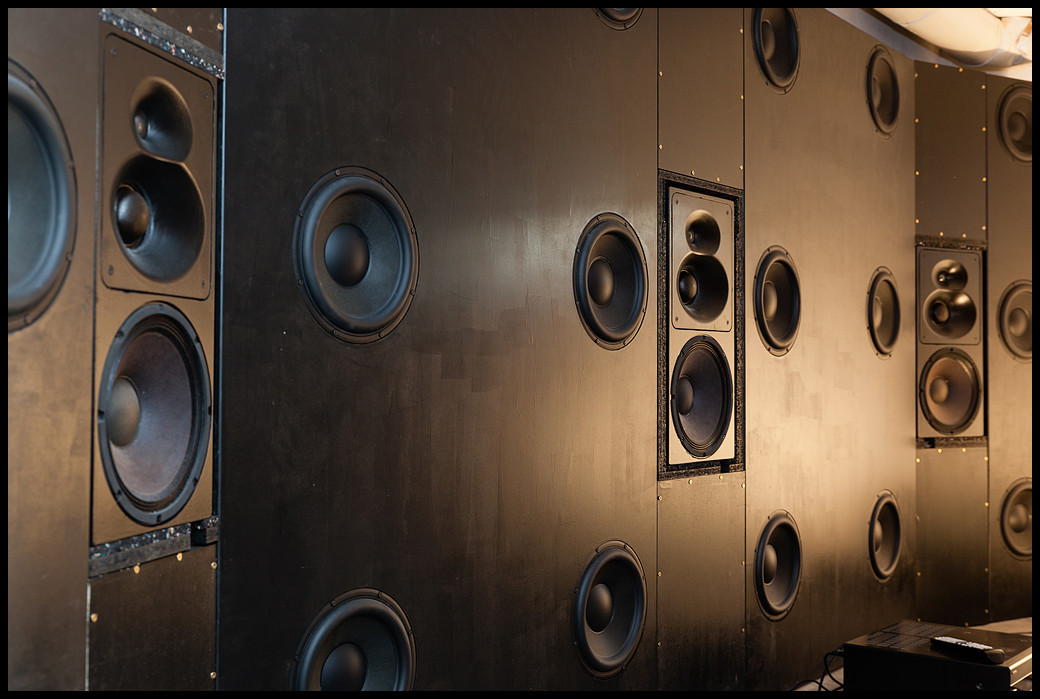Sure, you can get already with 4 subs relatively small position dependence, although in above case the 18 woofers are used for a SBA (which was later modified to a DBA) and to get below extreme properties:
Frequency Response: 3.8Hz - 120Hz (±1.5dB)
Harmonic Distortion (25Hz): 0.1% @ 100dB
0.5% at 110dB
Maximum level: >130 dB @ >20 Hz
130dB at 20Hz
124dB at 10Hz
119dB at 5Hz
I would not recommend those levels for long periods of time, not even at those lower frequencies.
It's hard to see, but the room doesn't seem to be very big to begin with.
Incl room gain, those figures kind of beats me, for music it doesn't make sense, for movies/film a maybe.
Hoping that the audio engineer just didn't put a brickwall/dc HP filter at around 20Hz on the mix (which happens often)
The lower distortion numbers also kind of beats me, the audibility for distortion for frequencies below 80-100Hz are extremely low.
At best at 5-10% THD figures are thereabouts. (depending on frequency as well SPL)
Like I said before, the technical aspect of it deserves a lot of credits, not a single bad word about it, but I have many serious doubts about the practicality and overall system efficiency of it. That's also the main reason why it's not so popular to begin with.
A very simple multi-sub system will already give a very satisfying result for most people.
Costs to benefit ratio is extremely small. Putting A LOT of effort in getting frequencies below 10-20Hz right.
While the benefits of those frequencies (if they are already in the mix to begin with), is debatable at best.
Or to say it on a more objective way, far away from being obvious at best.
For example, I would have split the array for those ultra low frequencies, since the wavelength become so big even an "array" is not gonna have any practical benefits anymore. Depending on the room dimensions (first room modes), but say roughly from 30Hz and up use the array.
Below that point is done by a couple of 18-21 inch corner subwoofers, ideally as close to the listener as possible.
Their efficiency as well as distortion figures will be miles better
I think it's very much debatable that those ultra low frequencies even "belong" to the audio domain.
A third harmonic would be around 15-40Hz , even when audible it would be extremely hard to tell if that harmonic would have a negative impact on the listening experience.
I understand the novelty of recreating the recording as clean as possible.
But the line between novelty and usefulness is ultra thin at this point.
People always only seem to think in audio terms when the word compromise falls.
But this is a good example that the room, surrounding as well as budget is heavily compromised.




